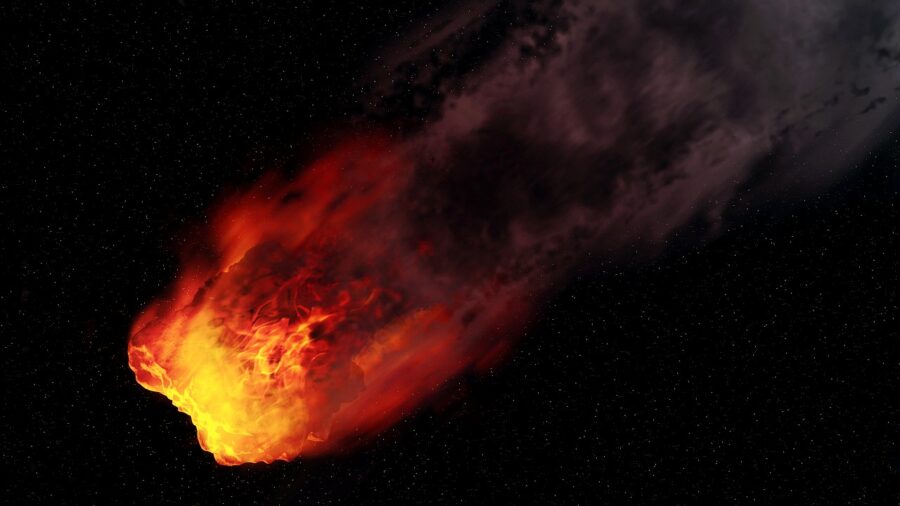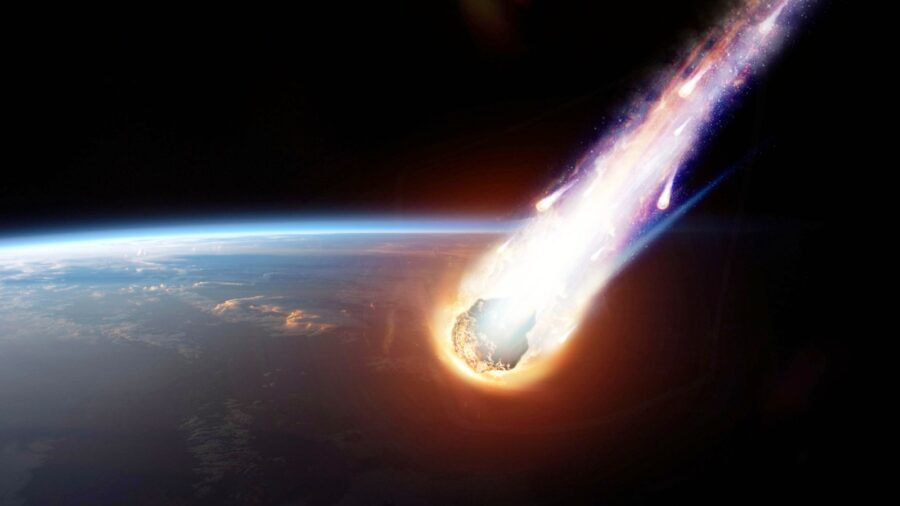
If disaster movies have taught us anything, it’s that when a world-ending asteroid is barreling towards Earth, not only will we all get a chance to perform our own heart-wrenching and sprawling monologues, but we’ll be in store for a mesmerizing, albeit terrifying, spectacle before we are wiped out in a fiery final act. While not quite the harbinger of doom and destruction, a newly discovered and bite-sized asteroid gave people in the Philippines a highly entertaining light show when it entered the Earth’s atmosphere on September 4.
The disintegration of the meteor emitted an impressive and luminous green light before completely exploding into a brief fireball that was visible from at least 250 miles away.
Spotted just hours before the asteroid was about to impact the skies above the small Asian country, the space rock identified as 2024 RW1 joined a club so exclusive that its members can all be counted on just two hands.
In the early morning hours on September 4, the European Space Agency (ESA) took to X to report that an asteroid would soon impact the Earth’s atmosphere over Luzon Island in the Philippines. Despite the initial shock of an incoming asteroid, the ESA noted that the flying space rock was just one meter in size and would be completely harmless to the people of the Philippines, though they would have a front-row seat to a “spectacular fireball” in the night sky.
Right on schedule, the asteroid impacted the Earth’s atmosphere at 12:46 p.m. Eastern Time, or 12:46 a.m. Philippine Standard Time, becoming a meteor, before rapidly breaking apart. The disintegration of the meteor emitted an impressive and luminous green light before completely exploding into a brief fireball that was visible from at least 250 miles away. According to the American Meteor Society, the bright green flash was likely due to the high magnesium content located within the asteroid.
Spotted just hours before the asteroid was about to impact the skies above the small Asian country, the space rock identified as 2024 RW1 joined a club so exclusive that its members can all be counted on just two hands.

The asteroid was first discovered by astronomers from the Catalina Sky Survey, based out of the University of Arizona’s Steward Observatory just outside of Tucson, Arizona. The Catalina Sky Survey, which is funded by NASA, scans the skies for objects around Earth for any object that could potentially be dangerous, such as an asteroid that is on course for a likely impact.
In the early morning hours of September 4, the Catalina Sky Survey spotted the three-foot-sized asteroid, dubbed 2024 RW1, hurtling towards Earth with a likely impact destination above the Philippines. The advanced detection allowed the astronomers the ability to offer a brief warning to the people of the Philippines.
While the local populations were in no immediate danger of a life-threatening asteroid impact, they were in prime position to film the colorful light show.
According to the ESA, asteroids the size of 2024 RW1 that impact the Earth’s atmosphere are not exactly a rare occurrence. On average, Earth sees a three-foot meteor impact once every two weeks, with smaller meteorite impacts occurring at a much higher frequency, totaling over 6,000 meteorites a year.
The advanced detection allowed the astronomers the ability to offer a brief warning to the people of the Philippines.
Despite meteors’ common occurrence, their detection before impact remains an arduous task. The discovery of 2024 RW1 just hours before impact is just the ninth time that astronomers have achieved such a feat. The last asteroid that was spotted hours before impact occurred in January 2024, when NASA scientists discovered 2024 BX1 just three hours before it entered the atmosphere and exploded above Berlin.
Source: Live Science
Content Disclaimer and Copyright Notice
Content Disclaimer
The content provided on this website is sourced from various RSS feeds and other publicly available sources. We strive to ensure the accuracy and reliability of the information, and we always provide source links to the original content. However, we are not responsible for the content’s accuracy or any changes made to the original sources after the information is aggregated on our site.
Fair Use and Copyright Notice
This website may contain copyrighted material, the use of which has not always been specifically authorized by the copyright owner. We believe this constitutes a “fair use” of any such copyrighted material as provided for in section 107 of the US Copyright Law.
In accordance with Title 17 U.S.C. Section 107, the material on this site is distributed without profit to those who have expressed a prior interest in receiving the included information for research and educational purposes. If you wish to use copyrighted material from this site for purposes of your own that go beyond fair use, you must obtain permission from the copyright owner.



